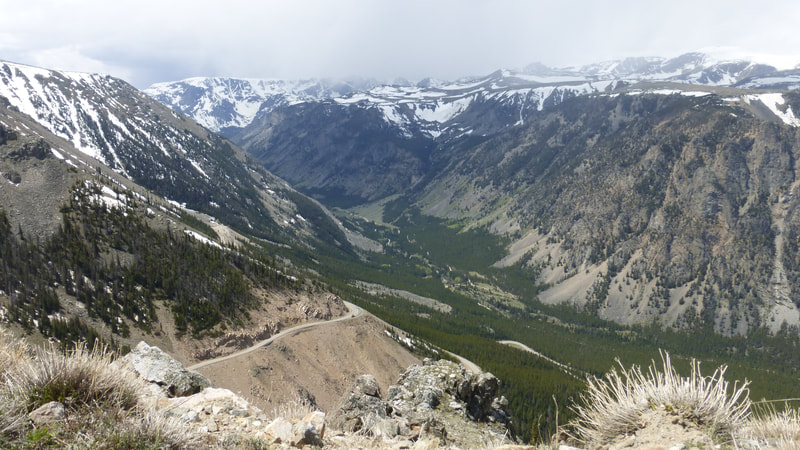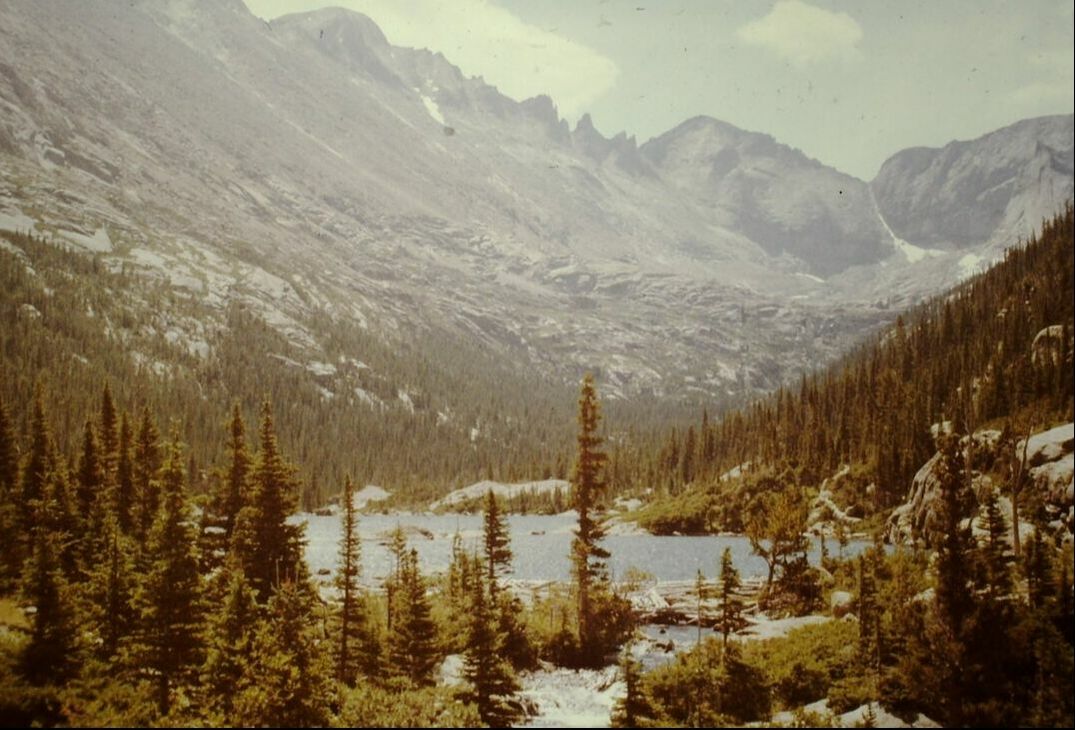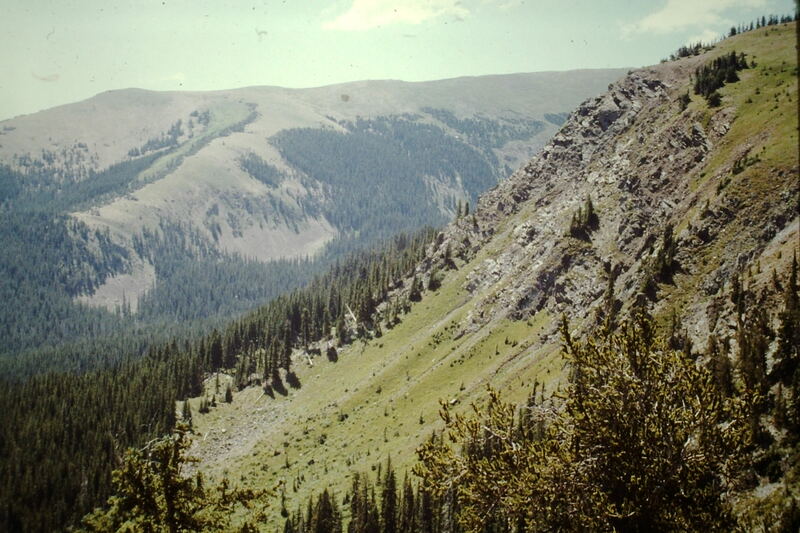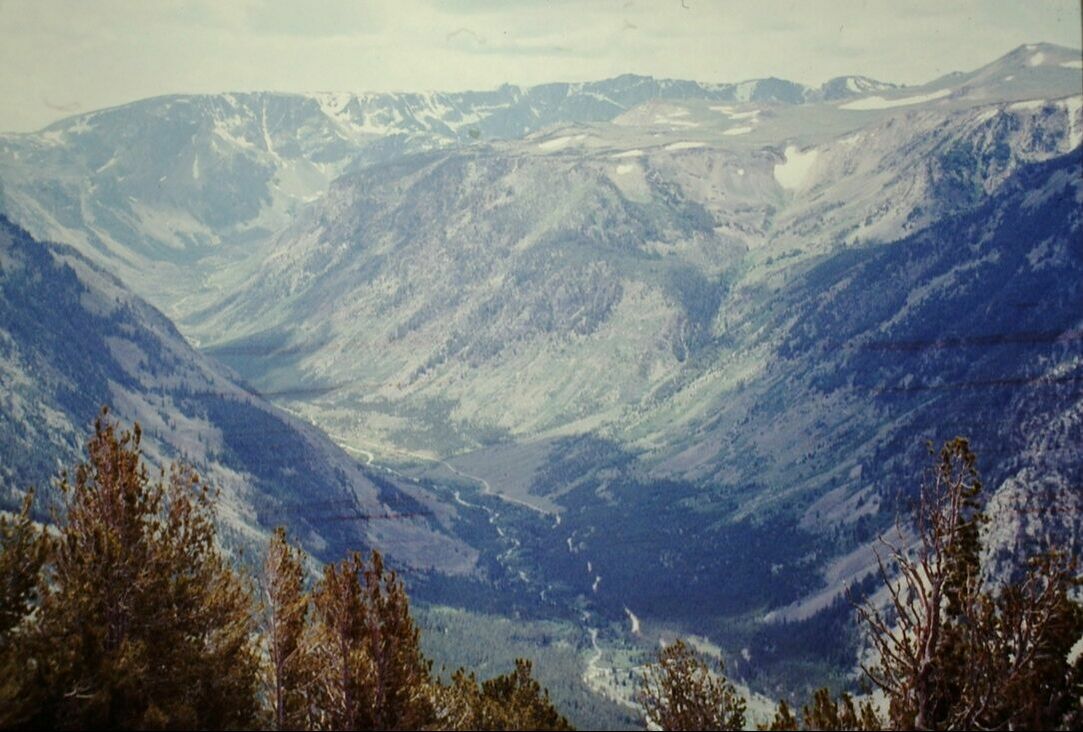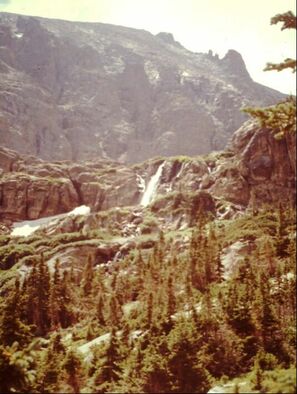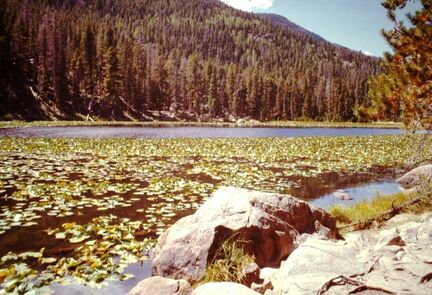A rather straight, open valley runs between mountain ridges. While only a small stream drains the valley now, it was once filled with hundreds of feet of moving glacial ice, still evidenced by deep scratches on exposed bedrock surfaces. Much of the valley floor is gentle alpine meadow, patchy low pine forest, or wetland. The ground profile across the valley is rounded, concave to the sky, with valley walls that slope up gradually from near the valley center, getting steeper as they get higher. Upper side slopes also get more severe as one travels up-valley, changing from merely breath-stealing steep climbs, at first, to actual cliffs near the valley head.
Dimensions The valley is about 2000 feet (600 m) wide overall, though the near-level valley bottom is a much narrower zone. Side walls rise 1000 feet (300 m) or more. Valley length is several miles (10+ km).
Key Details
- The glacier's erosional widening of the valley has left planed-off valley sides without many knobs, ridge spurs, or inlets. Forest- or turf-covered lower slopes give way higher up to rock rubble and patchy grass, or even bare bedrock.
- Despite a fairly smooth valley floor seen from a distance, a person hiking up one of these valleys will find that the slope of the path varies considerably. Sections of near-flat route, thousands of feet (hundreds of meters) or even a mile (2 km) long, alternate with steep climbs over exposed bedrock. The valley floor seems less like a gradual ramp, instead more like a sequence of flat stair 'treads' and steep 'risers' (in fact, physiographers once coined the term 'cyclopean stairs' for these Alpine valley ascents).
- It is common for some parts of the flatter valley floor to be scoured out even deeper than the ground further down the valley, creating ponds and elongated lakes that are all linked by a stream running down from the valley head. Some smaller ponds include beaver dams and lodges.
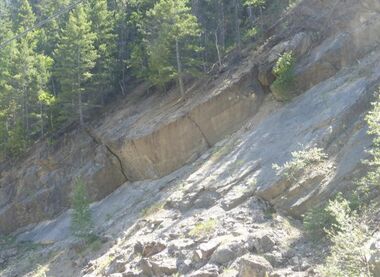
- A climb partway up the valley wall provides a vantage point over long distances up and down the valley. However sights of moving people and creatures are sporadic, periodically masked by stands of trees, rock outcrops, and steps in the valley floor.
- In warm months, deer and elk graze these meadows, and trout are found in the streams and ponds.
- Open to the sky, this valley floor quickly warms in sunlight, even when remnant snow patches litter the ground. The high valley walls can cast broad morning/evening shadows, but these areas continue to receive significant reflected light from the opposite walls until sundown.
- Granite slopes on the upper walls of glacier-sculpted mountain valleys sometimes have huge sheets of rock many feet thick, partly split away from the rock face, hanging almost like scales on the rock surface. These result from surface-parallel bedrock fractures caused by pressure release when the glacier first eroded away great depths of the rock, then removed its own weight when it melted. Collapse of a rock sheet to the valley floor happens very rarely (think decades or centuries), barring some major seismic disturbance.
Story Elements
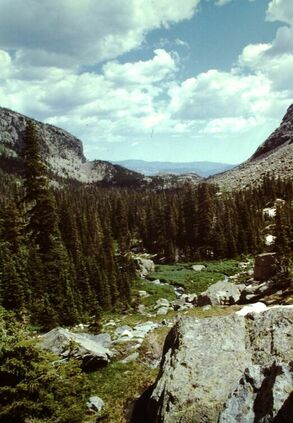
- With ascent being difficult up the steep valley walls, this is a good setting for a linear journey narrative, a trek completed in a day or two. Easy strolls through meadows and evergreen stands, and along grassy lake shores, can alternate with somewhat challenging scrambles up bedrock slopes near streamwater cascades. If such a journey is in an up-valley direction, however, it is likely to end with characters hemmed-in in a mountain cirque basin (see Cirque scene description), the most viable egress route being a return down-valley.
- A flight or pursuit along the valley is realistically augmented here by occasional glimpses of the quarry/hunters, even when they are miles/kilometers distant. Those wishing to camp with a fire here will need to make special effort to not broadcast their position to faraway observers.
- Beyond hunting, recreation, or simple exploration, there are other possible reasons for people to spend time in this remote valley. Because the mountains are composed of granite and similar rocks, a small-scale gold panning operation might take advantage of the stream's natural sorting of sediment, which creates placer concentrations of the fine, heavier gold fragments being brought downstream from the valley's massive supply of glacially ground bedrock. Trail-building or even road-building might be underway in a more down-valley area, where the lower slopes and smooth form of the valley side allows an angled ascent route to be cut into the slope, leading to a highland route over the mountain range. (This would mean that bored trail workers, perching on break time at a high vantage point, would daily be surveying anything of interest that might be happening on a considerable portion of the valley floor.)
- An important structure or other thing of significance might be located in an up-valley area where the scale-like sheets of weathering-off rock hang on the more cliff-like upper valley sides, threatening to break free, slide downward, and obliterate what is below. Magic or some advanced technology may have been put in place here millennia ago to hold those sheets of rock in place long after their natural time to fall. A failure of the magic/technology would set off a spectacular collapse of many sheets at once.
- Combat dynamics:
- The rounded-profile 'U-shaped' valley floor has a limited area of truly flat ground. Gently sloping ground to either side makes up more area, with the gradient becoming more severe as distance from the valley center-line increases. This creates a multi-level arena for battle, especially when taking distance weapons into account. It also increases visibility of different parts of the battlefield for any observer on open ground.
- The stream course and ponds in the valley center can provide minor obstacles and visual division lines in combat. Fighters skirting around a lake's end may encounter steeper, lumpy bedrock terrain (a bedrock step or 'sill' that confines the lake), bringing challenges of exposure, more challenging terrain, and more difficult crossings of even small streams where they exist as turbulent cascades over bedrock.
- Large military forces moving along the valley floor will need to shift their formations to avoid ponds and wetlands and to negotiate the easiest paths through steeper sections. This will delay progress and likely lead to unintentional clustering of forces at subtle bottlenecks.
- Someone in an elevated spot, looking a long distance up-valley will be able to survey all parts of the valley floor, both the flat 'treads' and the steeper, down-valley-facing 'risers'. However someone looking down-valley won't have a view of the 'riser' slope surfaces or the flatter areas just below them. This will make a difference in the effectiveness not only of lookouts, but also artillery trying to cover long reaches of the valley.
Reference Location
Rocky Mountain National Park, north-central Colorado. Multiple hikes up mountain glacial valleys start from the Bear Lake trail head and other locations in the park. Nearby associated scenes are the the cirques found at the uppermost ends of Alpine valleys (Cirque scene description) and the broad ridge tops commonly found separating the valleys (Highland Tundra scene). A few photos used in this description were taken in other mountain glacial valleys of Montana and New Mexico.
© Rice-Snows 2019
Proudly powered by Weebly
